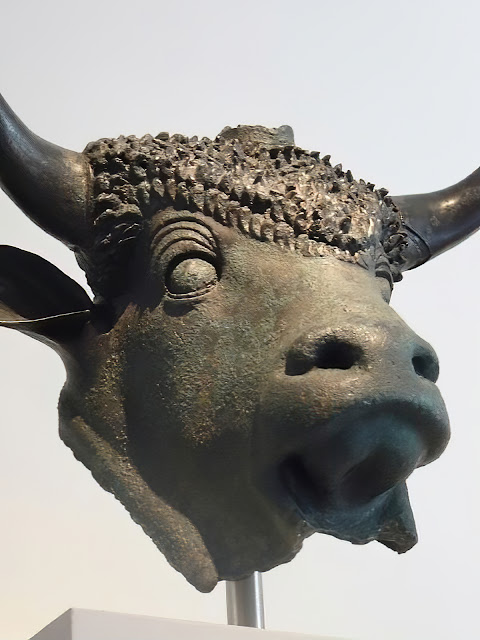Remains of ancient Octodurus at the Pierre Gianadda Foundation Museum in Martigny, Switzerland
Remains of ancient Octodurus at the Pierre Gianadda Foundation Museum in Martigny, Switzerland.
Octodurus was originally an oppidum of the Gallic Veragri tribe and was located on the route to the strategic pass of Poeninus (now known as Great St. Bernard's Pass) in the Swiss Alps. It was conquered by the Roman Republic in 57 BCE then occupied by Servius Galba and the 12th legion. While wintering there, Galba's legion was attacked by a Gallic force of more than 30,000 warriors. Although the Battle of Octodurus is considered a Roman victory, one third of the village was destroyed during the battle and Galba burned the remainder when he retreated. Octodurus was rebuilt and during the reign of Claudius was designated a new Roman colony named Forum Claudii Augusti then renamed Forum Claudii Vallensium Octodurensium and became the capital of Vallis Poenina Province. Roman remains include an amphitheater that was restored in 1978 and the forum. The museum itself was constructed on the site of a Roman temple.
Image: Head of a Bronze three-horned bull (center horn broken off) recovered from excavations of ancient Octodurus Roman 1st century CE photographed at the Metropolitan Museum of Art in New York.
Note: Gallo-Roman imagery with triplism has been found predominately in Germany, Gaul and Britain, during the period of Roman rule. Celtic scholars say while there were undoubtedly triple-entities prior to Roman occupation, they seemed to have taken on a Classical ‘flowering’ during the high point of the Empire. The three-horned bull was associated with Jupiter by the occupying Romans. According to Miranda Jane Green in her book Celtic Myths, "This triplism seems to occur most frequently in the imagery of divine beings associated with prosperity and well-being."




Comments
Post a Comment